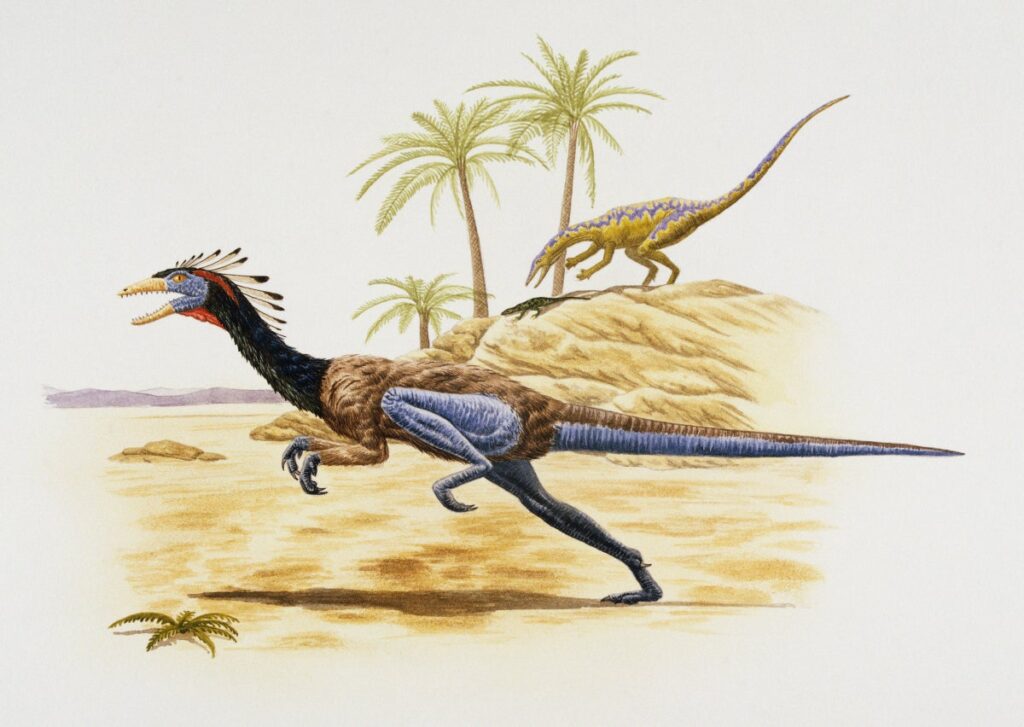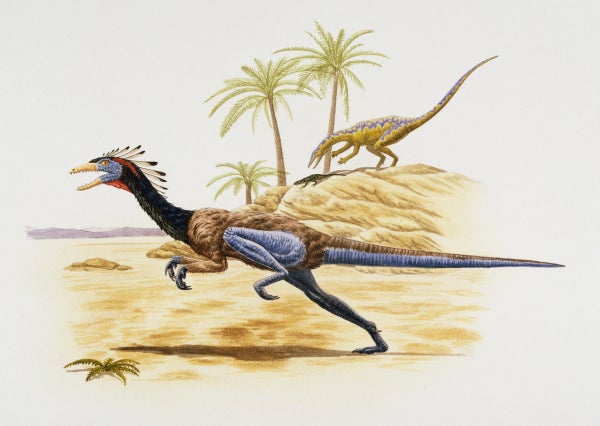
Small-armed, two-legged dinosaurs may have wagged their tails to help them run, for the same reason humans swing their arms, according to a new study.

Figuring out how extinct species moved about in the world is not easy, as just bones and footprints are left to analyze. Most previous studies on bipedal dinosaurs — those that stand on two feet, such as Tyrannosaurus rex — have deduced movement by focusing on the animals’ legs.
Scientists had assumed the big tails of bipedal dinosaurs were passive structures to help with balance, said lead author Peter Bishop, a postdoctoral fellow at Harvard University (who, during the majority of the study, was at the Royal Veterinary College in Hatfield in the U.K.).
On supporting science journalism
If you’re enjoying this article, consider supporting our award-winning journalism by subscribing. By purchasing a subscription you are helping to ensure the future of impactful stories about the discoveries and ideas shaping our world today.
In the new study, Bishop and his colleagues modified a simulation method used in the fields of medicine and aerospace to probe deeper into the biomechanics of bipedal dinosaurs.
First, they tested their simulations on a living creature, a Tinamou bird — an order of ground-dwelling birds found in Central and South America that have similar characteristics to ancient bipedal dinosaurs. They then made sure that the results of their simulations matched real-life observations.
Then, the researchers tested their simulation on a single species of bipedal dinosaur. Coelophysis bauri; a fast, long-limbed species that lived during the Triassic period, which spanned from 251.9 million to 201.3 million years ago. They fed the computer simulation a digital model of the animal, taken from CT scans of its fossil bones.
With the computer simulation, the researchers could divide the dinosaur’s backbone into multiple segments, such as the body, head, neck, back and tail. The researchers were then able to switch parts of the body on and off, to figure out exactly what role each part played while the simulated dinosaur sprinted from point A to point B in as little time as possible.
“We didn’t really have expectations or hypotheses leading into this,” Bishop told Live Science. “We assumed that [the tail] would just be there hanging.”
Not just hangin’
It turns out that the tail was doing much more than just acting as a counterbalance. When the researchers removed the tail from the simulation or kept it from moving, the dinosaur started rotating its pelvis differently to compensate for the missing or immobile tail.
This suggests that the tail played an important role in controlling angular momentum, or the momentum of a rotating object. If you think of the center of the dinosaur as the axis, the tail was working to keep the creature balanced as its body weight shifted from left to right during a run.
It’s the same reason “us humans swing our arms when we walk or run,” Bishop said. This dinosaur, and many other bipedal dinosaurs, had small arms that didn’t do much to control this dynamic balance. “Conversely, we humans don’t have a tail, but we have pretty sizable arms and we control angular momentum in that way,” Bishop said.
They also found that when they forced the tail to wag out of sync with the legs (for example, having the tail move right when the dinosaur stepped its right leg forward, rather than the left leg), the dinosaur had to expend “massively” more energy, Bishop said. This suggests that the tail also played a role in energy-efficient locomotion.
“Who says we need a time machine to have reasonable confidence that the paper provides a plausible [and] convincing model for the running locomotion of the early dinosaur Coelophysis?” said Michael Benton, a professor of vertebrate paleontology at the University of Bristol in the U.K., who was not involved in the study.
Because the methods were tested and refined with living analogs, “we can be confident they work with fossil animals,” Benton told Live Science in an email.
Moving fossils
Though the researchers focused on just a single dinosaur species, they think that because Coelophysis bauri had a body design that’s very similar to many other bipedal dinosaurs, the results likely hold true for those species when running. The results also likely hold true for walking dinosaurs, but the tail wagging is likely less vigorous, Bishop said.
“This is an interesting study, and it is really nice to see that the researchers used sophisticated simulations,” said Nizar Ibrahim, a senior lecturer in paleontology at the University of Portsmouth in the U.K. and a National Geographic explorer, who was also not involved in the study. “This study, and other recent ones, show that the tail played a more dynamic role than previously assumed.”
Ibrahim was the lead author of a study published in the journal Nature in April 2020 that found one giant dinosaur, Spinosaurus aegyptiacus, may have used its tail to move through water.
“Dinosaur tails are quite diverse and come in a variety of shapes and sizes,” Ibrahim told Live Science in an email. “It will be interesting to see this [new study’s] approach applied to other dinosaurs.”